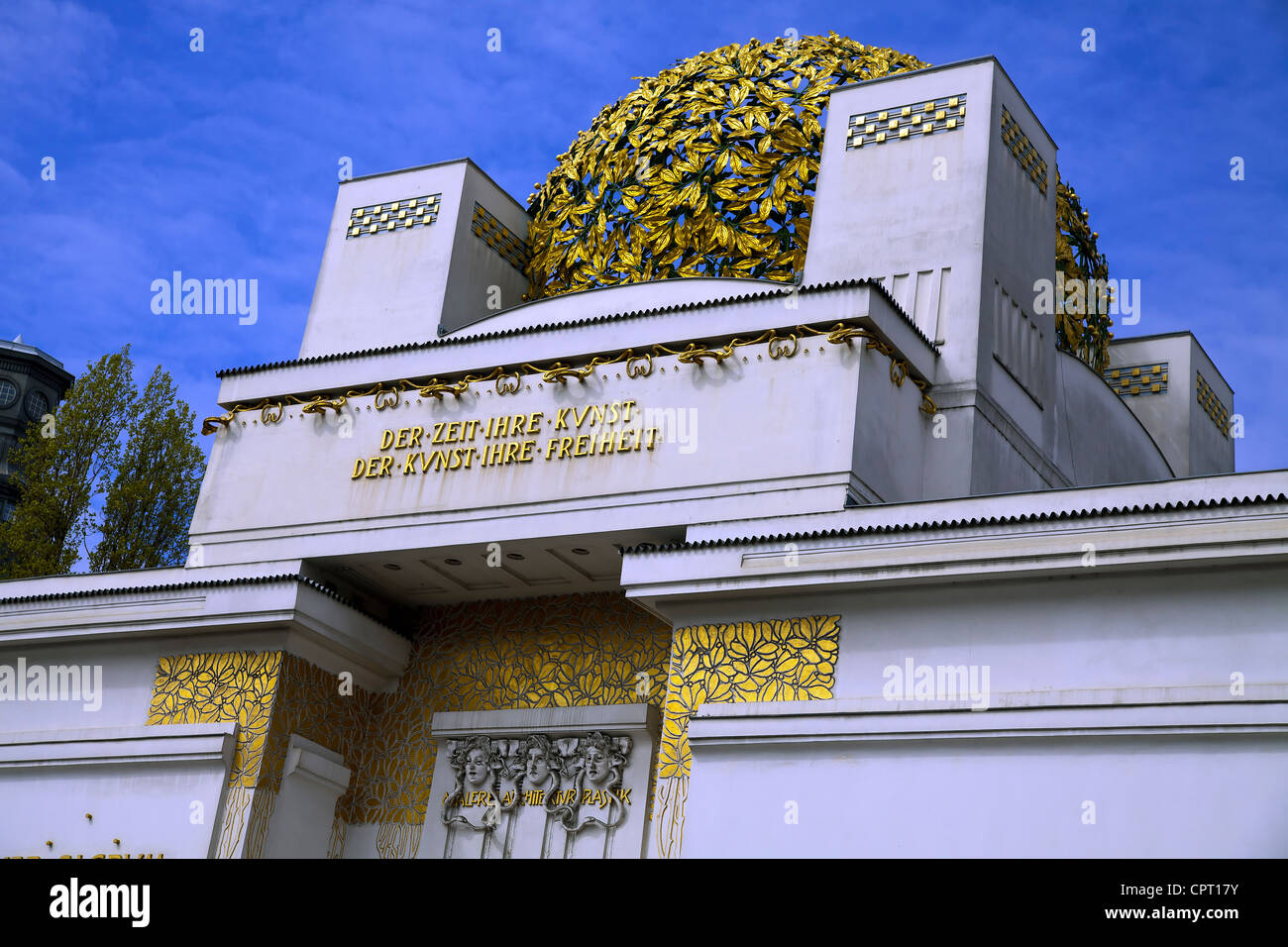

OLBRICH VIENNA SECESSION BUILDING DOWNLOAD
It is notable for its blocky simplicity, but the metal dome is decorated with Art Nouveau floral ornaments. Download this stock image: The Secession building, Vienna, Austria - built in 1897 by Joseph Maria Olbrich - BGAK3W from Alamys library of millions of high.

Josef Maria Olbrich designed the building for the Secession exhibitions, which was his first large-scale project. Once inside, one can find the beautiful Beethoven Frieze, a painting by Gustav Klimt himself. House of the Secession in Vienna (1898-1999). The white walls and pillars glorify even more the precious golden decorations, including the inscription that stands out above the main gate: "To every age its art, to every art its freedom". The cubical structure is crowned by an enormous dome comprised of a thousand laurel oak leaves, forged branches and coated by a thin layer of gold. Olbrich based his design on Gustav Klimt, who had imagined a majestic building of clean and precise lines. The Secession Palace soon became the official seat of organized exhibitions for the common Viennese.

This Poster Print is ready for hanging or framing and ships in an oversized tube for maximum protection. Poster Print by Joseph Maria Olbrich - Item VARBLL0587412100 would make the perfect addition to your home or office or gift recipient. This association consisted of painters such as Gustav Klimt, Egon Schiele, and Oskar Kokoschka, but also famous architects like Otto Wagner and his student Joseph Maria Olbrich. Joseph Maria Olbrich was an Austrian architect and co-founder of the Vienna Secession. The Secession Palace of Vienna is the symbol of the artistic movement of the Wiener Secession between the end of the 1800s and the beginning of the 1900s, in which 19 artists distanced themselves from the Academy of Fine Arts of Vienna to create an independent group. If you would like to publish text from MoMA’s archival materials, please fill out this permission form and send to. It blends early Modernism and late Art Nouveau architecture like no. If you would like to reproduce text from a MoMA publication, please email. The Secession is the most successful provocation by Viennese architects and artists. For more information about film loans and our Circulating Film and Video Library, please visit. For access to motion picture film stills for research purposes, please contact the Film Study Center at. Aside from the permanent presentation of Gustav Klimts Beethoven. Ti video có sn 20.000 giây v Vienna Austria May 23 Secession Building vi 50 fps. Olbrich exploits the square as a basic motif in a number of cruciform combinations in the entrance area and exhibition wing.

This building was completed in 1898 and caused. Immediately thereafter Olbrich was commissioned to design their headquarters. The building itself covers an area of about 1,000 sq m (10,800 sq ft) and has a centralized floor plan. In April 1897 Olbrich, together with a group of painters, sculptors, and architects, founded the Vienna Secession, an organization of artists opposed to the conservative Künstlerhausthe official artists association. Motion picture film stills cannot be licensed by MoMA/Scala. For its 120-year anniversary the Secession building will present itself renewed and shiny. The ground plan and cross-section of the Secession reveal very simple geometrical forms.
OLBRICH VIENNA SECESSION BUILDING LICENSE
All requests to license archival audio or out of copyright film clips should be addressed to Scala Archives at. At this time, MoMA produced video cannot be licensed by MoMA/Scala. Olbrich exploits the square as a basic motif in a number of cruciform combinations in the entrance area and exhibition wing. At first, the building was supposed to be erected on the Ringstrae (perimeter road), but Olbrichs ideas provoked heavy protest of Viennas municipal council. The building itself covers an area of about 1,000 sq m (10,800 sq ft) and has a centralized floor plan. MoMA licenses archival audio and select out of copyright film clips from our film collection. The ground plan and cross-section of the Secession reveal very simple geometrical forms. If you would like to reproduce an image of a work of art in MoMA’s collection, or an image of a MoMA publication or archival material (including installation views, checklists, and press releases), please contact Art Resource (publication in North America) or Scala Archives (publication in all other geographic locations).


 0 kommentar(er)
0 kommentar(er)
